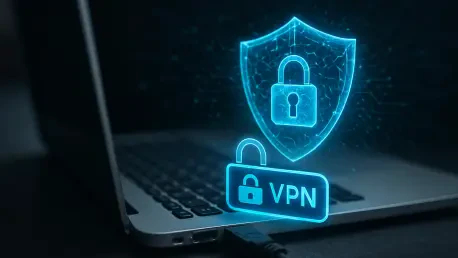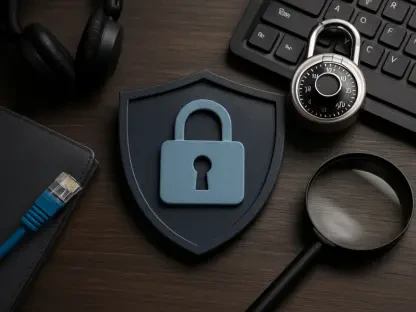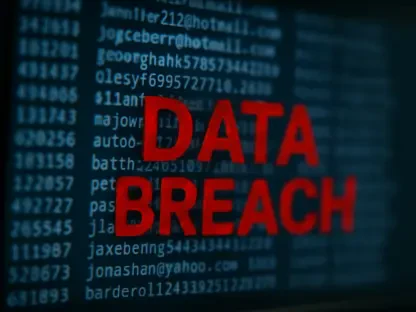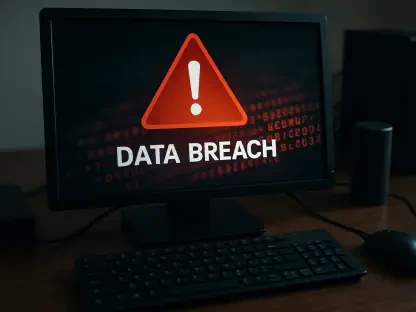In an era where digital threats evolve at an unprecedented pace, the emergence of quantum computing poses a significant challenge to traditional cybersecurity measures that have long protected online data, pushing technology companies to innovate. As quantum technology advances, the encryption methods once deemed unbreakable, such as AES, face the risk of being decrypted by powerful quantum algorithms capable of processing information at extraordinary speeds. This looming threat has led to proactive solutions, and one VPN provider has taken a pioneering step forward. Windscribe, a prominent player in the VPN industry, has introduced Post-Quantum Encryption (PQE), a cutting-edge security feature designed to shield user data from future quantum decryption risks. This development marks a forward-thinking approach to safeguarding privacy in a rapidly changing digital landscape, ensuring that sensitive information remains secure even as computational power grows. By addressing this emerging concern, Windscribe sets a new benchmark for VPN security standards.
1. Understanding the Quantum Threat to VPN Security
The rise of quantum computing introduces a paradigm shift in how data security must be approached, as these machines operate on principles vastly different from classical computers. Unlike traditional systems that process bits sequentially, quantum computers leverage quantum bits, or qubits, to perform multiple calculations simultaneously, potentially breaking complex encryption in mere seconds. This capability threatens widely used encryption standards like AES, which rely on the computational difficulty of factoring large numbers—a task quantum algorithms could simplify dramatically. For VPNs, which serve as a critical barrier between users and cyber threats, this means that data transmitted today could be stored by malicious actors for decryption later, a tactic known as Store Now, Decrypt Later (SNDL). The urgency to counteract this risk has never been clearer, as the timeline for quantum breakthroughs remains uncertain but increasingly plausible with each passing year of technological progress.
Windscribe’s response to this challenge underscores the importance of preemptive measures in cybersecurity, especially for VPN services tasked with protecting user privacy across global networks. While current encryption remains robust against today’s threats, the potential for quantum computers to render these methods obsolete necessitates forward-thinking solutions. Post-Quantum Encryption represents a shift toward algorithms believed to withstand quantum attacks, focusing on mathematical problems resistant to quantum speedup. This approach aims to secure data not just for the present but for decades ahead, addressing the SNDL threat head-on. By integrating such advanced cryptography, Windscribe demonstrates a commitment to staying ahead of technological curves, ensuring that VPN connections remain a trusted shield against evolving digital risks. This initiative also highlights a broader industry need to rethink security protocols as quantum research accelerates.
2. Technical Innovations in Windscribe’s PQE Implementation
Windscribe’s adoption of Post-Quantum Encryption involves a sophisticated technical upgrade that fortifies its VPN connections against future quantum threats with precision and foresight. Specifically, the company employs TLS 1.3 with a hybrid key exchange mechanism known as X25519MLKEM768, which combines classical and post-quantum cryptographic techniques for enhanced security. This hybrid approach ensures compatibility with existing systems while introducing resistance to quantum decryption through lattice-based cryptography and key encapsulation mechanisms (KEMs). Additionally, Windscribe leverages the WireGuard protocol’s pre-shared key (PSK) parameter, rotating it with each login to add an extra layer of protection. This implementation, validated through tools like Wireshark, reflects a meticulous effort to align with emerging standards set by organizations such as NIST, ensuring robust and reliable encryption for users worldwide.
Beyond the technical specifics, the rollout of PQE across Windscribe’s platforms showcases a seamless integration designed for user accessibility without compromising on security depth. Available in app versions such as Desktop v2.17.9, Android v3.93.1835, and iOS v3.9.4, this feature activates automatically upon selecting the WireGuard protocol after a logout and login cycle. The emphasis on hybrid algorithms signals an adaptive strategy, blending proven methods with innovative post-quantum primitives to guard against both current and anticipated threats. This careful balance mitigates risks associated with transitioning to entirely new cryptographic systems, which often face scrutiny for potential vulnerabilities during early adoption phases. Windscribe’s proactive stance in refining these mechanisms positions it as a leader in redefining VPN security for a quantum-ready future, setting a precedent for others in the industry to follow.
3. Steps to Activate Post-Quantum Protection
Enabling Post-Quantum Encryption on Windscribe’s platform is a straightforward process designed to ensure that users can access cutting-edge security with minimal effort or technical expertise. The first step requires logging out and back into the latest version of the app, a mandatory action for those who were logged in prior to the update to ensure the system refreshes with the new encryption settings. Following this, users must navigate to the app settings and select the WireGuard protocol, which serves as the foundation for PQE integration. Once a preferred server location is chosen and the connection is established, the post-quantum encryption activates automatically, providing an invisible yet powerful layer of protection. This user-friendly approach ensures that advanced security is accessible to all, regardless of technical background, democratizing safety in an increasingly complex digital environment.
The simplicity of activating PQE belies the profound impact it has on securing VPN connections against future threats, reflecting Windscribe’s dedication to both innovation and usability in its service delivery. This process not only fortifies data transmission but also aligns with the broader goal of preparing for quantum advancements that could otherwise compromise privacy. By embedding such a critical feature into a routine update and protocol selection, the company minimizes disruption while maximizing protection, a balance crucial for widespread adoption. Users benefit from knowing their data is shielded by algorithms resistant to quantum decryption, a reassurance that becomes vital as Store Now, Decrypt Later attacks loom on the horizon. This initiative serves as a model for how VPN providers can integrate next-generation security without alienating their user base, paving the way for broader industry shifts toward quantum-resistant technologies.
4. The Broader Impact on VPN Security Evolution
Windscribe’s introduction of Post-Quantum Encryption marks a pivotal moment in the VPN industry, signaling a shift toward anticipating and countering quantum computing threats before they fully materialize. This move not only protects users from potential future risks but also sets a standard for other providers to prioritize long-term data security over short-term complacency. By addressing the Store Now, Decrypt Later strategy employed by some adversaries, the company ensures that encrypted data remains safe even if quantum decryption becomes viable. The proactive adoption of PQE underscores a critical recognition that cybersecurity must evolve in tandem with computational advancements, a lesson that resonates across the tech landscape and encourages a reevaluation of encryption practices.
Looking ahead, the next steps for VPN security involve widespread collaboration among providers, researchers, and standards bodies to refine and expand post-quantum solutions. Industry players should consider adopting hybrid cryptographic models similar to Windscribe’s, blending current and future-ready algorithms to maintain robust protection during transitional periods. Additionally, investing in user education about emerging threats like quantum decryption can empower individuals to make informed choices about their digital safety. As quantum technology progresses, continuous updates to encryption protocols will be essential, alongside rigorous testing to validate their effectiveness. These actions, inspired by pioneering efforts in the field, can collectively fortify the digital ecosystem, ensuring that privacy remains a cornerstone of online interactions in an increasingly complex world.









